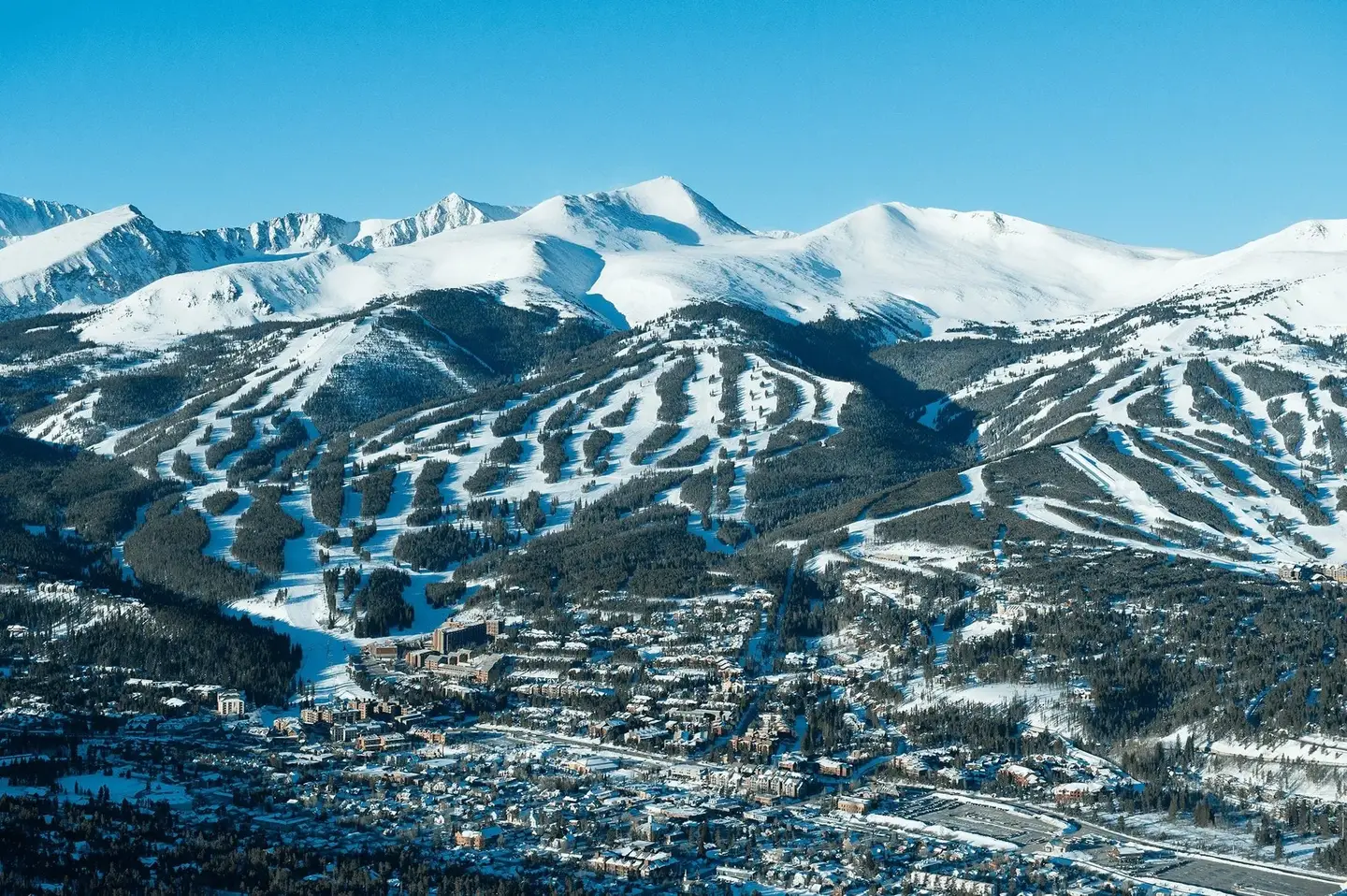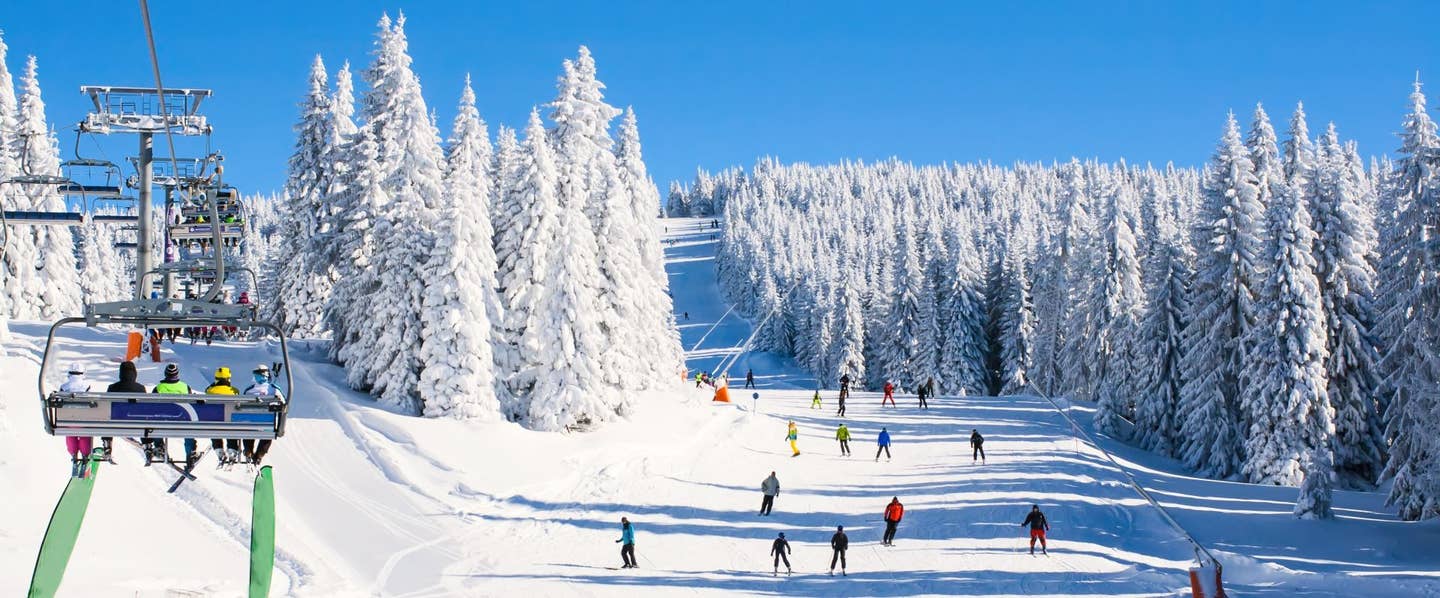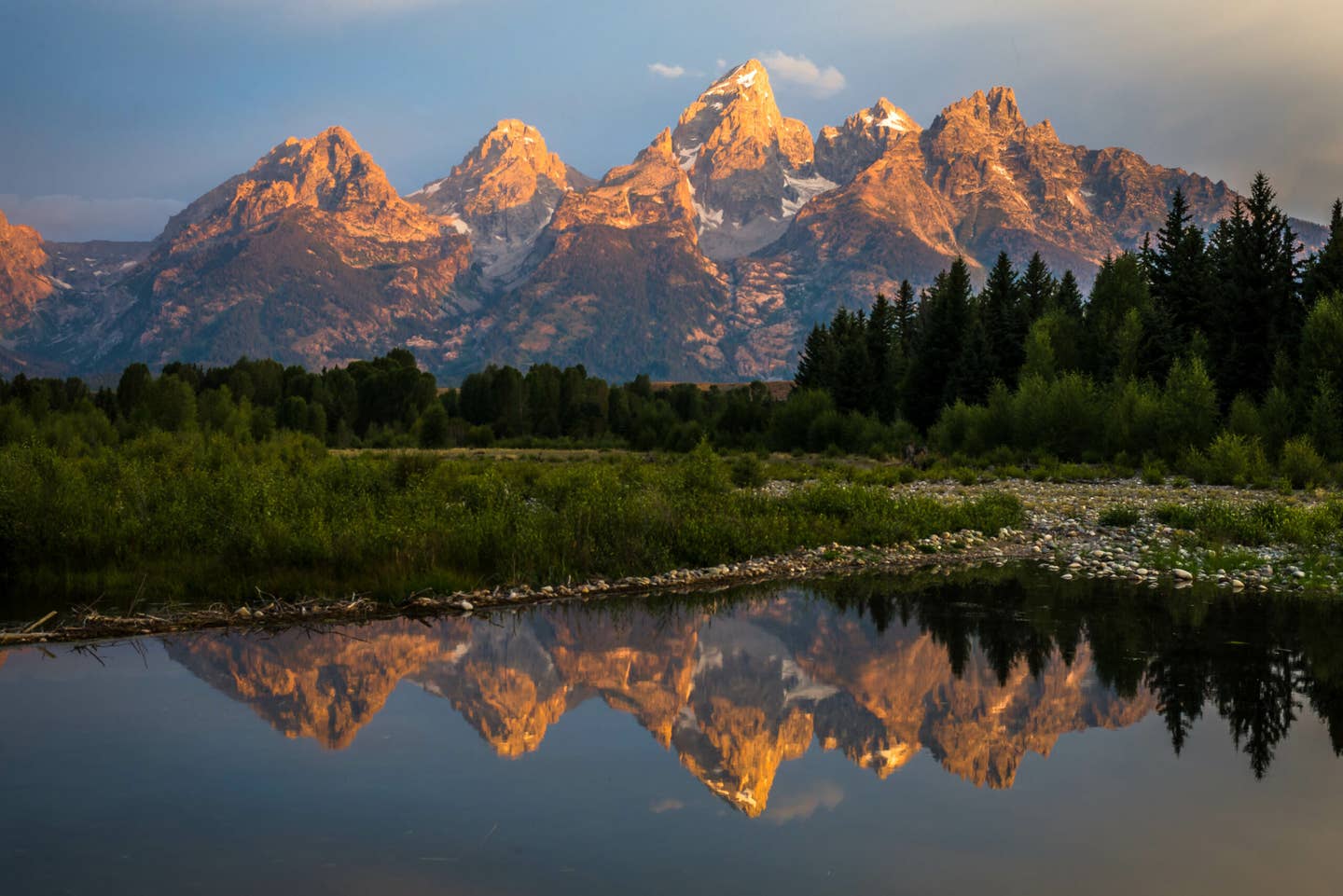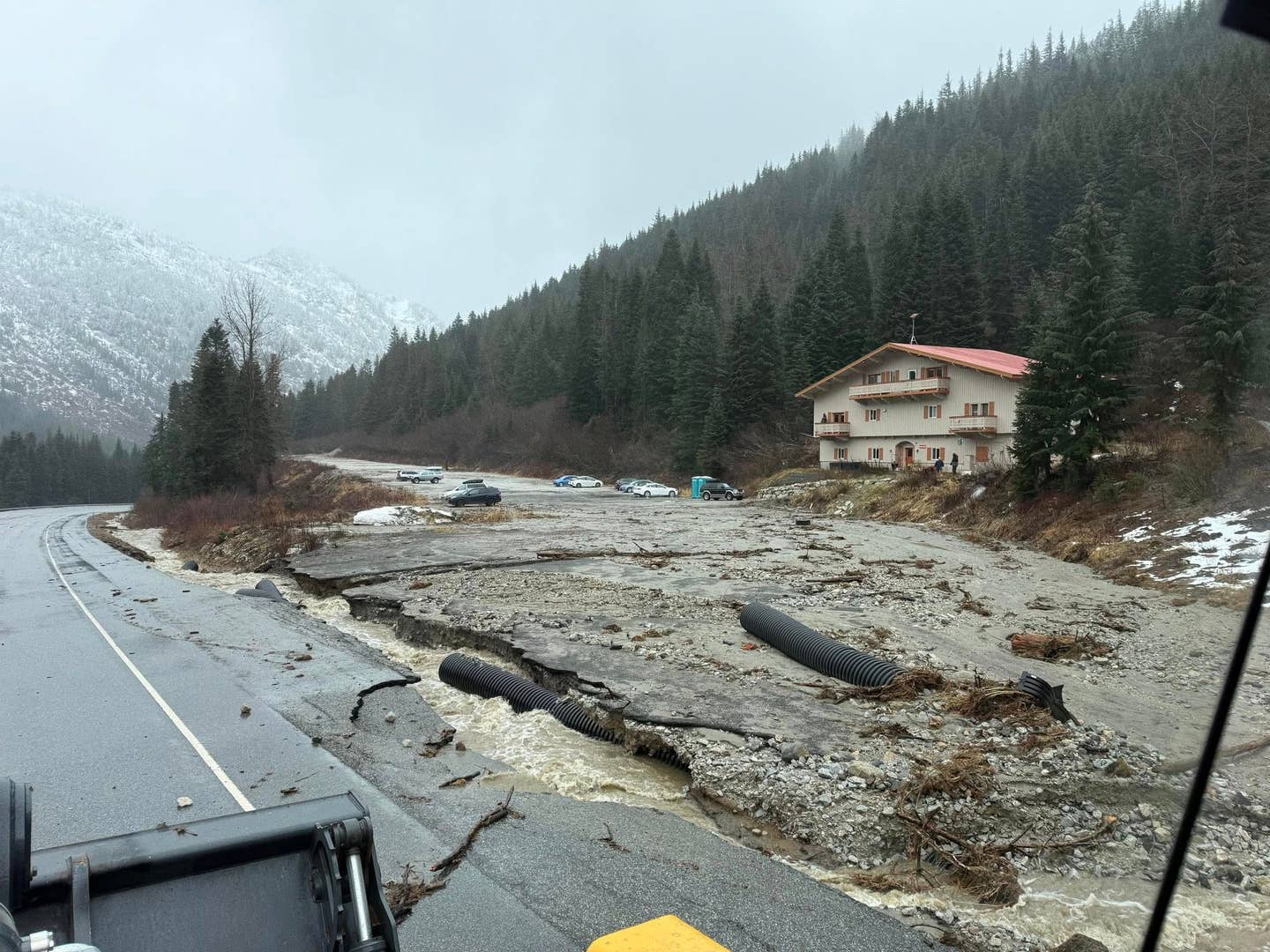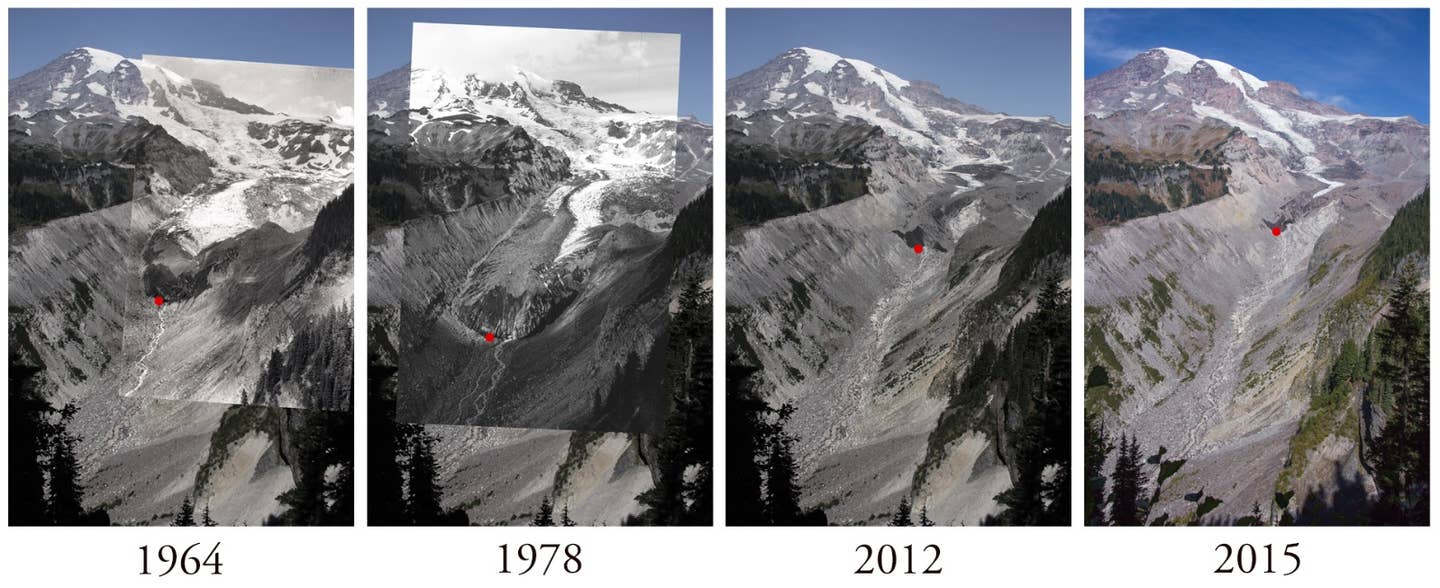

Glacier Retreat is Threatening Climbing Routes
Popular Stories
Our mountains are changing. Glacier retreat is in full swing, and it's shifting how we interact with the mountains. Climbing routes all over the world are becoming destabilized, not to mention the adverse effect on ecosystems as glaciers disappear. On Washington's behemoth Mount Rainier, locals and climbers alike are feeling the heat.
Why Talk About Mt. Rainier?
Rainier is the most heavily glaciated peak in the lower 48, featuring 25 named glaciers that feed rivers, sustain wildlife, and shape every climbing route to the summit.
But those glaciers, the lifeblood of both the mountain and the ecosystems that surround it, are melting away at an alarming rate. The state of Washington has lost almost 40% of its glacial volume since the mid-1980s, according to glaciologist Mauri Pelto of Nichols College. Modeling suggests all of the Olympic Penninsula's glaciers will "largely disappear" by 2070.
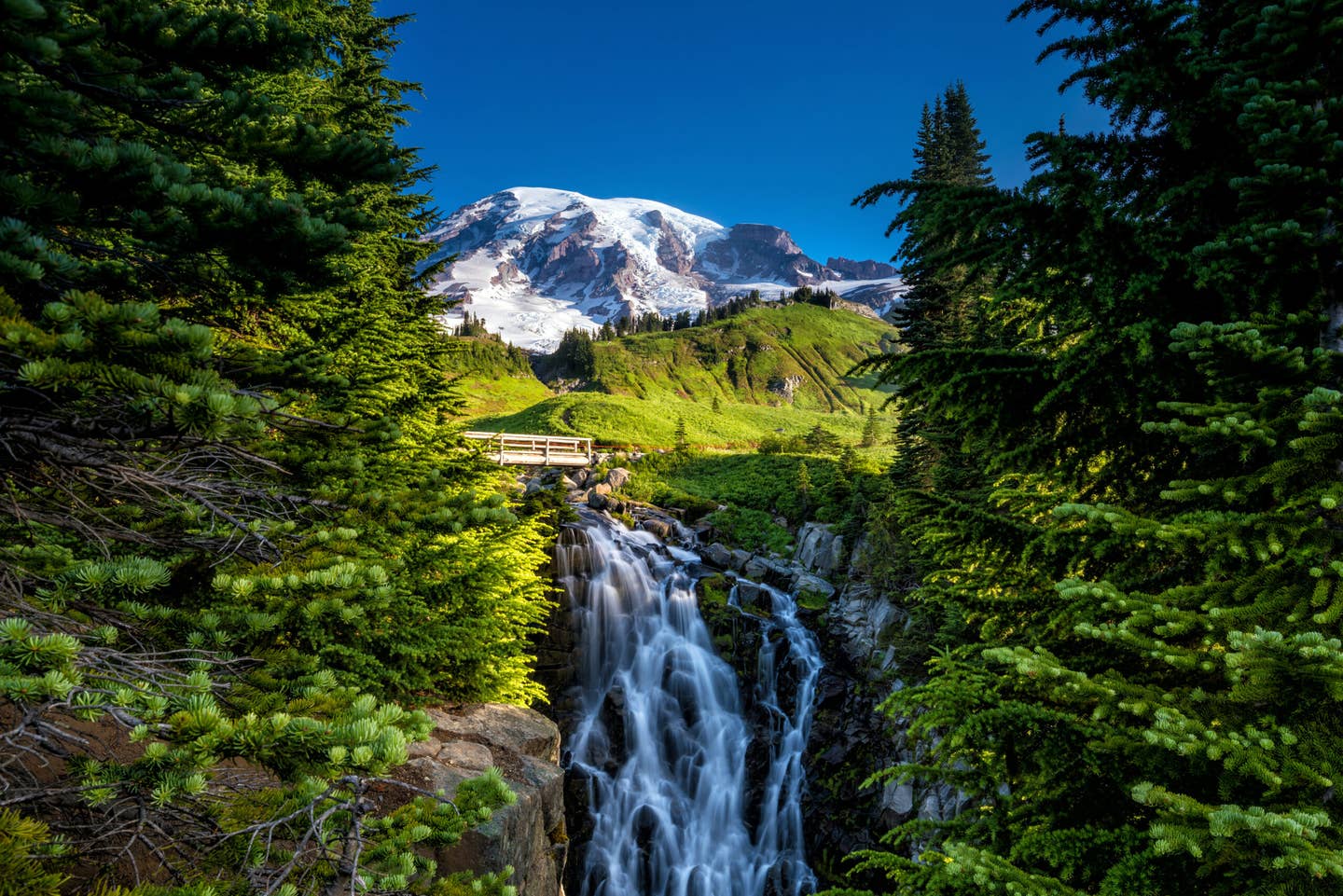
Why are the Glaciers Melting so Fast?
In decades past, hot summers could be remedied by heavy snowfall in the winter. So long as an equilibrium is struck, glaciers stay in business. But in recent decades, winters have not kept up with the summer melting season. Moreover, Winters getting wamer overall, meaning much of the precipitation never freezes.
Warmer winters bring rain, not snow. “Now every year is a bad year,” Pelto told the Seattle Times.

Delicate Ecosystems
Ice and snow deposits aren't just for recreation, either. Rainier’s glaciers feed five major river systems, delivering cold, steady water flows that sustain salmon runs, wildlife, and downstream communities. Without glacial melt to buffer seasonal changes, rivers run warmer in summer and flood-prone in fall. That threatens ecosystems, drinking water, agriculture, and hydropower across western Washington.
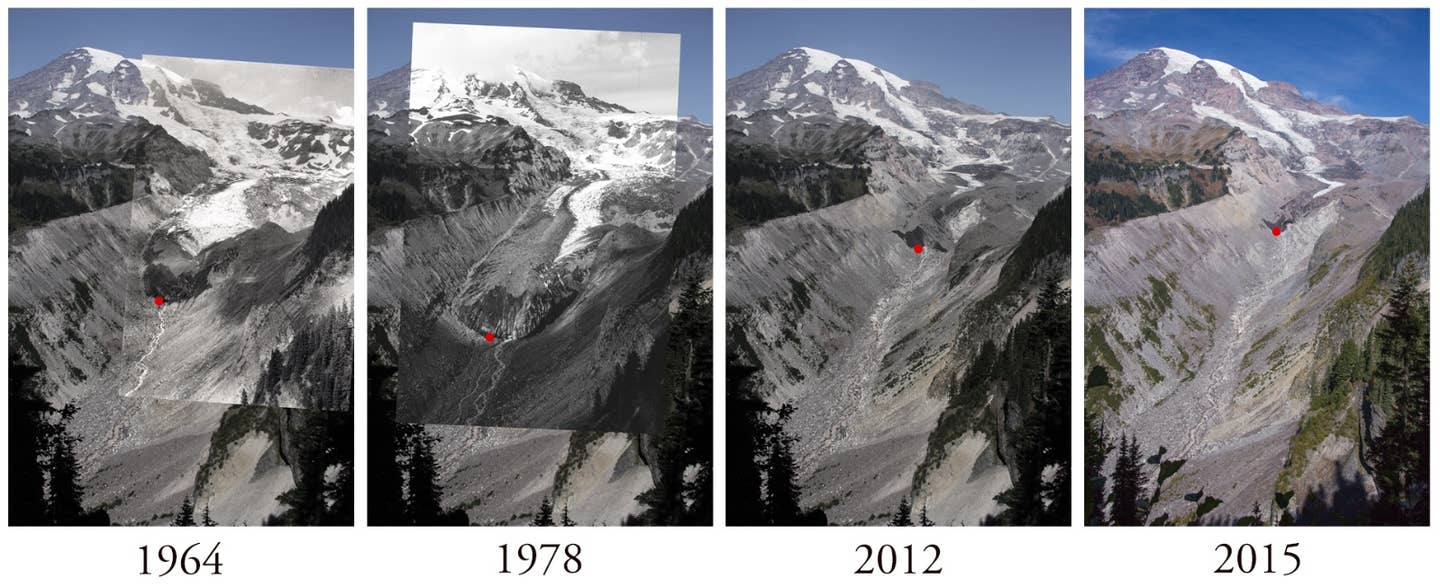
For those with eyes that see, the changes are plain as day. Iconic features like the Nisqually Glacier (above), once visible from the Paradise visitor center, have receded dramatically. Climbing routes that were once reliable have become more dangerous and prone to rockfalls, forcing guides and climbers to adapt or abandon long-standing approaches.
Sign Up for the TGR Gravity Check Newsletter Now
The Shrinking Window
The clock is ticking not just for alpinists who dream of summiting on classic routes, but for anyone who benefits from the mountain as an ecological anchor. That means everyone.
It's crucial to note that the PNW is far from the only mountaineering hotspot region feeling the pains of glacier loss:
- Exploradores Glacier, Patagonia (Chile) – Once a popular hiking and ice-climbing destination, now permanently closed due to thinning ice and the rapid growth of dangerous meltwater lagoons.
- Mer de Glace, French Alps – France’s largest glacier has lost a kilometer in length and 160 meters in thickness in just 35 years, destabilizing climbing routes and threatening downstream water supplies.
- El Plomo, Andes (Chile) – The historic Inca route has been destabilized by warming temperatures, with new glacial lagoons, landslides, and sinkholes transforming the climb.
- Écrins Massif, French Alps – A study of 70 mountaineering routes found that more than 90% are now impacted by glacier retreat, rockfall, or bare ice, with some classic summer climbs no longer possible.
- Mount Athabasca, Canadian Rockies – Approaches once considered simple glacier walks now require pitched climbing, while unstable moraines threaten landslides and rockfall.
- Middle Teton Glacier, Grand Teton National Park – This glacier has shrunk by about 25% since 1967, exposing moraine and rock that have altered the technical nature of the climb.
- Boulder Glacier, Mount Baker (Washington) – Retreated more than 1,600 feet between 1987 and 2008 alone, leaving unstable, barren terrain and increasing rockfall hazards.
Glacier Retreat Changes Everything
Mountaineers increasingly report being forced to change their approaches to routes that once defined entire regions. Sometimes that’s just the evolution of alpinism. More often, it means heightened danger, shorter seasons, and routes that disappear entirely.
And this article barely even scratches at the untold damage that warming will do, and is doing doing, to global ecosystems.
The bottom line is glaciers are melting, and faster than ever. Scientists can tell you that in charts and studies. Or you can just ask the people who spend their lives in the mountains. They’ll tell you the same thing: ice that once defined our climbing world is vanishing before our eyes.
